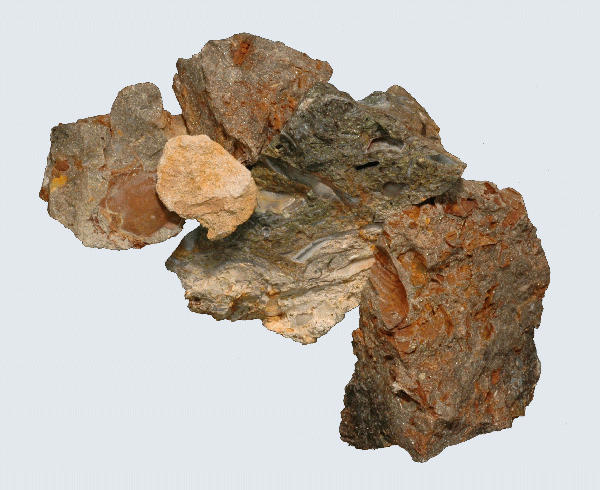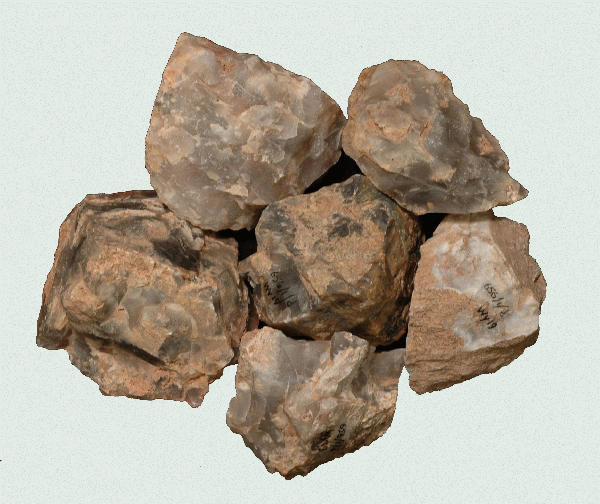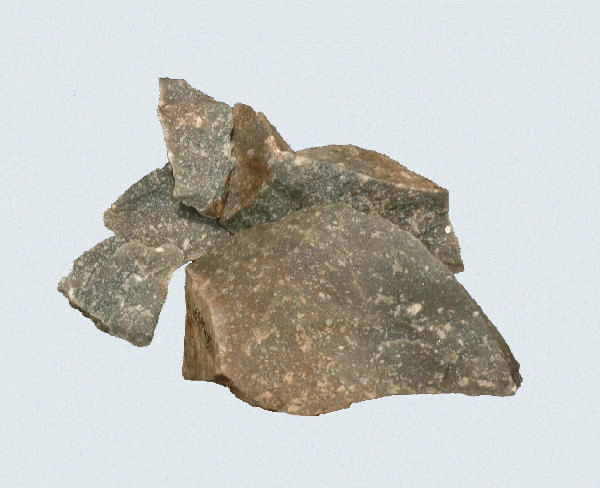
Aquia Orthoquartzite, 44ST0825, Stafford County, Virginia.
Type Quartzite
Collection Location:
Sample collected from an Aquia Formation orthoquartzite outcropping in Stafford County, Virginia. Other outcroppings of the material should be found in Charles County, Maryland.
Description
There are several varieties of orthoquartzite. One variety contains coarse rounded quartz grains that have been fused within a weathered opaline and glauconite matrix. When weathered, this variety is white, cream, light gray, tan, brown and sometimes slightly translucent. Another variety contains fine rounded sand grains that have been fused within a weathered chert-like and glauconite matrix. When weathered, the fine-grained variety is gray, tan, brown, yellow, and red. The exposure near Stafford, Virginia when fresh is black, dark gray, or dark gray-blue in color. When weathered the orthoquartzite is white, gray, tan, brown, yellow, and red in color. The green glauconite within orthoquartzite artifacts typically weathers to a tan, yellow or orange color over time. Some specimens contain small particles of iron. Weathered examples with iron usually have a stained matrix that is red to brown in color.
Distribution
Delmarva Peninsula.
Cultural Implications
The archaeological record indicates limited use of Aquia Formation orthoquartzite. Several Paleo-Indian and Early Archaic projectile points were manufactured out of the coarse-grained orthoquartzite. A study of regional artifact collections by Lowery suggests hat the fine-grained orthoquartzite was utilized exclusively during the Middle Archic through Woodland periods. The Aquia Formation is approximately 150 to 250 feet below the present land and bay surface near the mouth of Eastern Bay. During prehistoric periods with lower sea level, the orthoquartzite would have been accessible for human use in the ancient Susquehanna River valley.
References
Prepared By Egloff 2008




